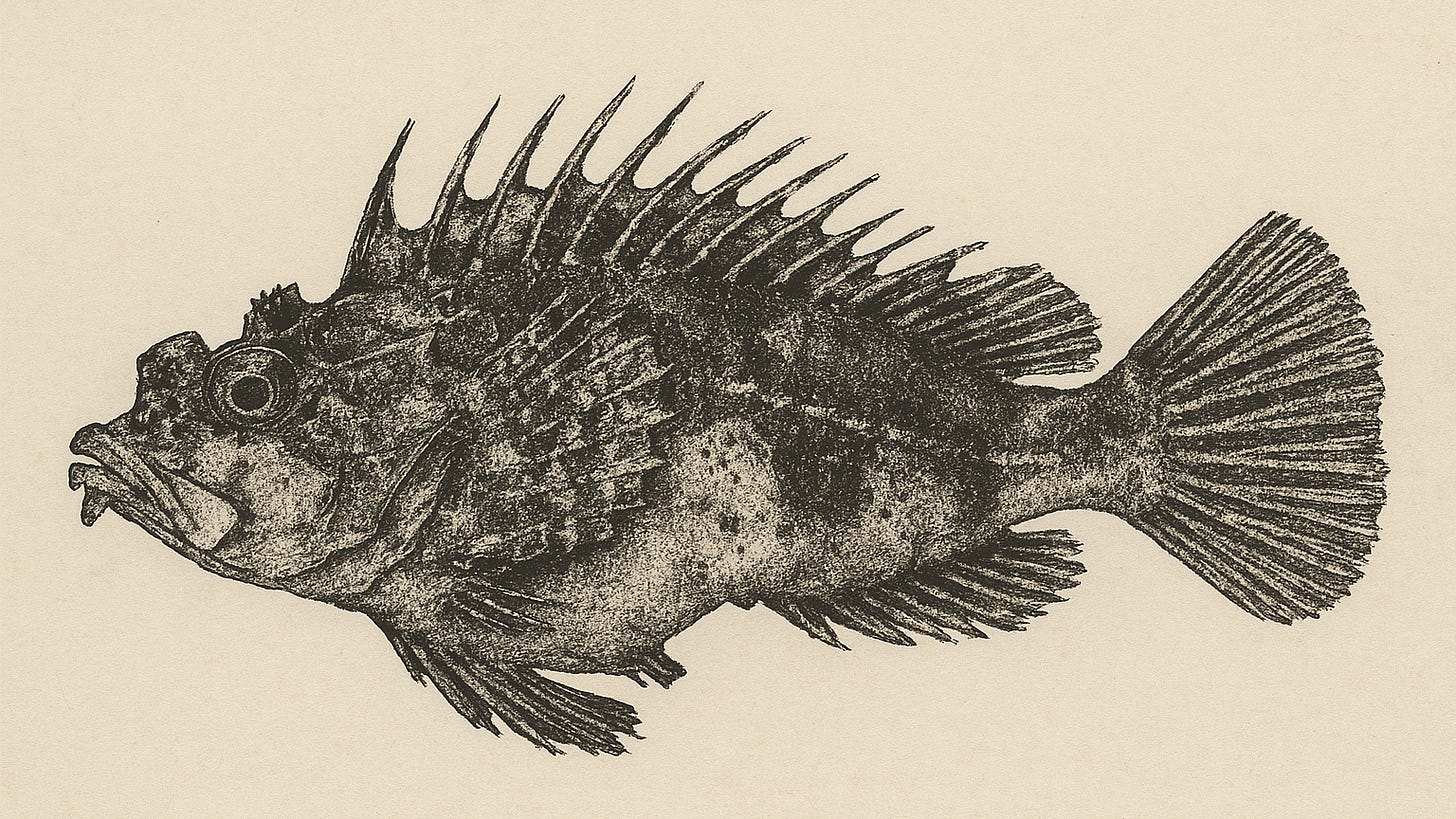Why an Ugly Fish Became a Divine Offering
My Folklore Study of Okoze in Mountain Deity Worship
Traveling throughout Japan, I have encountered various cultures and customs distinct to each location, and yet, at times, I have also come across surprisingly similar beliefs in places far removed from each other. Discussing Japan, in a sense, requires one to continuously traverse as much of the country as possible over a lifetime, thoroughly absorbing its cultural plurality into one’s mind and body, relying not merely on knowledge but on actual experience and sensory perceptions.
Amidst these journeys, there exists a curious folk belief that has particularly captured my interest. And this fascination is not limited to me alone; ever since the birth of folklore studies, scholars have been intrigued by this peculiar practice, which embodies both the complexity and allure of exploring pluralistic cultures. The object central to this belief is a marine fish known as the Okoze (オコゼ).
The Okoze belongs to the Scorpaenidae family, characterized by its ugly appearance covered in sharp spines. I do not know whether it is consumed abroad, but in Japan, it is considered a luxury fish, infrequently eaten due to its scarcity. Contrary to its grotesque appearance, it has a surprisingly exquisite taste. However, during my travels throughout various regions, I discovered a historical practice in which this seafood, the Okoze, was highly esteemed as an offering dedicated to the mountain deity (山神). Although this custom has ceased today, it was widespread across Japan up to about a century ago, with traces indicating it partially persisted into the twenty-first century.



